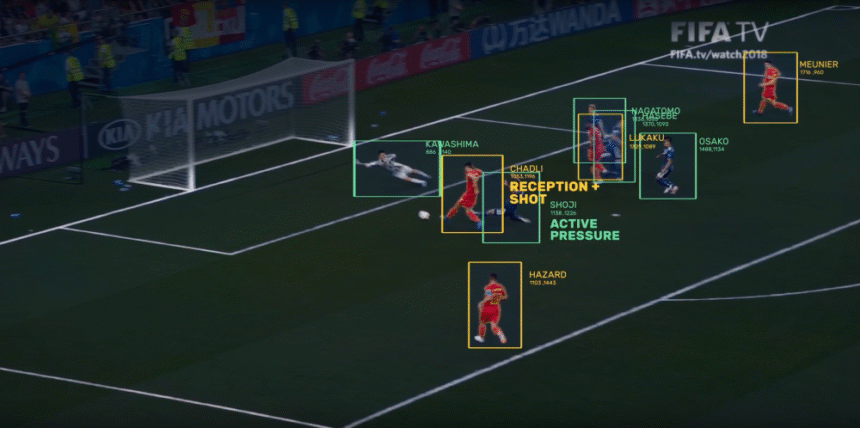Artificial Intelligence (AI) has rapidly emerged as a game-changer in the world of sports analytics, revolutionizing how teams strategize, how athletes train, and how fans engage. From real-time performance tracking to predictive injury prevention and personalized fan interaction, AI’s integration into sports is not just a trend—it’s a fundamental shift that’s reshaping the future of competitive athletics and the sports business ecosystem.
Real-Time Performance Analysis and Decision-Making
One of the most impactful applications of AI in sports analytics is real-time performance tracking. Using a combination of computer vision, machine learning algorithms, and wearable sensors, AI can monitor player movements, biomechanics, and in-game decisions with precision that far surpasses human observation.
In sports like football, basketball, and cricket, AI systems analyze player positioning, passing networks, and heatmaps to generate tactical insights. For instance, in soccer, platforms like StatsBomb and Opta employ AI models to calculate expected goals (xG), possession value, and pressing efficiency, providing coaches with granular data to adjust strategies mid-game.
AI is also powering automated video breakdowns, helping analysts cut hours of footage into digestible highlights focused on key performance indicators (KPIs), enabling faster and more informed tactical decisions.
Injury Prediction and Load Management
Another breakthrough area is injury prevention and player wellness. AI-powered predictive models can assess an athlete’s risk of injury by analyzing training loads, recovery times, sleep patterns, and even psychological stress levels. Teams like Manchester City, NBA franchises, and NFL teams now use AI tools that flag abnormal patterns, prompting preemptive interventions.
Wearable technologies—equipped with GPS, accelerometers, and heart rate monitors—feed continuous data into AI systems that recommend optimal rest and training cycles, reducing overuse injuries and improving player longevity.
Scouting and Talent Identification
AI has also transformed scouting and talent recruitment. By analyzing massive datasets across leagues and competitions, AI models can identify hidden gems based on performance metrics, physical attributes, and even behavioral tendencies.
For example, in baseball, Moneyball-style analysis has evolved into machine learning-based models that assess player potential beyond traditional stats. Similarly, in cricket and tennis, AI is used to assess form, shot patterns, and success probabilities, influencing recruitment decisions.
Furthermore, facial recognition and gait analysis are being piloted to evaluate biomechanics and injury predispositions in potential recruits.
Fan Engagement and Smart Broadcasting
Beyond the field, AI is revolutionizing the fan experience. From personalized content recommendations on streaming platforms to chatbots that deliver match stats and updates, AI enhances engagement and interactivity.
AI-generated highlights, automatic camera tracking (used in lower-tier football leagues), and real-time sentiment analysis on social media help broadcasters and teams tailor content to audience preferences.
Platforms like IBM Watson in tennis and AWS AI tools in the NFL have introduced smart stat overlays, predictive win probabilities, and live tactical breakdowns during matches, bringing fans closer to the game than ever before.
Betting and Fantasy Sports
The rise of AI in sports betting and fantasy leagues has added another layer to its utility. Predictive models assess player form, matchup probabilities, and team momentum to offer more accurate odds and insights. In fantasy sports, AI aids users in making data-driven decisions by simulating thousands of game scenarios.
Startups in India, the UK, and the U.S. are integrating AI tools into fantasy platforms, offering lineup optimizers and injury impact projections, which are reshaping how millions of fans engage with sports daily.
Ethical Concerns and Data Privacy
As AI becomes more entrenched in sports, concerns around data privacy, algorithmic bias, and athlete autonomy are growing. Athletes’ biometric and psychological data, if mishandled, could lead to exploitation or unfair evaluations. Regulatory frameworks and ethical standards are needed to ensure that the integration of AI supports player welfare and maintains competitive fairness.
There’s also a risk of over-reliance on data, where human intuition and context are overshadowed by algorithmic recommendations. Striking the right balance between machine-driven insights and human judgment remains a key challenge.
The Future of AI in Sports
Looking ahead, the role of AI in sports will only deepen. Emerging technologies such as Generative AI, Digital Twins, and Reinforcement Learning are already being explored to simulate training environments, generate strategic playbooks, and personalize training modules.
AI is expected to play a central role in women’s sports development, para-sports optimization, and grassroots talent development, making high-level analytics accessible beyond elite organizations.
With continuous advancements, AI is not just analyzing the game—it’s redefining how it’s played, coached, experienced, and commercialized.
In Summary
AI in sports analytics is accelerating a transformation across every level of athletics—from the locker room to the living room. By enhancing performance, reducing injuries, enriching fan experiences, and unlocking new revenue streams, AI is making sports smarter, safer, and more engaging than ever before.












